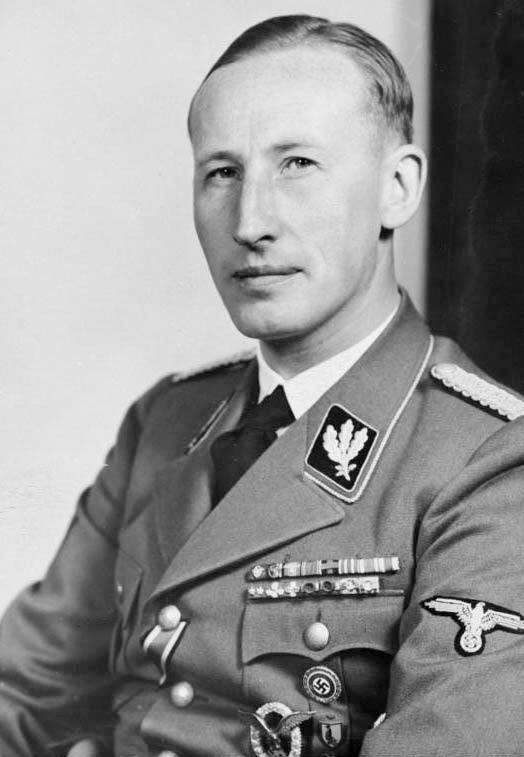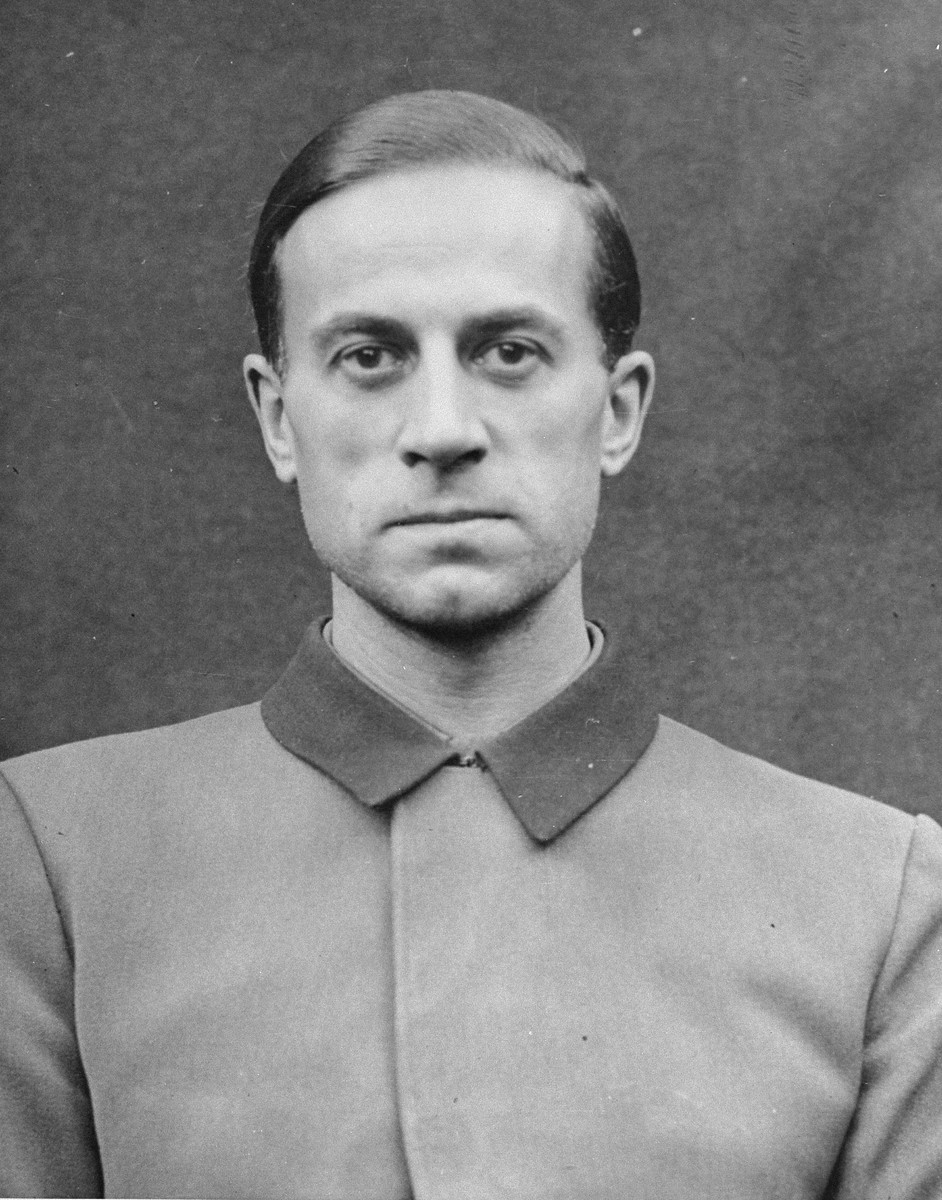|
Kurt Franz
) , allegiance= , branch= Schutzstaffel , serviceyears=1935–1945 , rank=Untersturmführer , commands=Treblinka (deputy commander; became camp's third and final Commandant from August 1943 – 19 October 1943) , unit= SS-Totenkopfverbände , awards= , laterwork= , spouse = , parents = , children = Kurt Hubert Franz (17 January 1914 – 4 July 1998) was an SS officer and one of the commanders of the Treblinka extermination camp. Because of this, Franz was one of the major perpetrators of genocide during the Holocaust. Sentenced to life imprisonment in the Treblinka Trials in 1965, he was eventually released in 1993. The verdict against Franz stated that "a large part of the streams of blood and tears that flowed in Treblinka can be attributed to him alone." Early career Kurt Franz was born in 1914 in Düsseldorf. He attended public school in Düsseldorf from 1920 to 1928, and then worked as a messenger and as a cook. Franz's father, a merchant, died early. His mother wa ... [...More Info...] [...Related Items...] OR: [Wikipedia] [Google] [Baidu] |
Treblinka Trials
The two Treblinka trials concerning the Treblinka extermination camp personnel began in 1964. Held at Düsseldorf in West Germany, they were the two judicial trials in a series of similar war crime trials held during the early 1960s, such as the Jerusalem Adolf Eichmann trial (1961) and the Frankfurt Auschwitz Trials (1963–65), as a result of which the general public came to realize the extent of the crimes that some two decades earlier had been perpetrated in occupied Poland by German bureaucrats and their willing executioners. In the subsequent years, separate trials dealt with personnel of the Bełżec (1963–65), Sobibor (1966), and Majdanek (1975–81) extermination camps. Hirtreiter trial In 1946 Josef Hirtreiter was arrested in the course of the Allied investigations into the killing of disabled persons in the Hadamar killing centre. Although not focused on Treblinka from the beginning, and not serving as an lead-in to the later Treblinka trials, the H ... [...More Info...] [...Related Items...] OR: [Wikipedia] [Google] [Baidu] |
Düsseldorf
Düsseldorf ( , , ; often in English sources; Low Franconian and Ripuarian: ''Düsseldörp'' ; archaic nl, Dusseldorp ) is the capital city of North Rhine-Westphalia, the most populous state of Germany. It is the second-largest city in the state and the seventh-largest city in Germany, with a population of 617,280. Düsseldorf is located at the confluence of two rivers: the Rhine and the Düssel, a small tributary. The ''-dorf'' suffix means "village" in German (English cognate: '' thorp''); its use is unusual for a settlement as large as Düsseldorf. Most of the city lies on the right bank of the Rhine. Düsseldorf lies in the centre of both the Rhine-Ruhr and the Rhineland Metropolitan Region. It neighbours the Cologne Bonn Region to the south and the Ruhr to the north. It is the largest city in the German Low Franconian dialect area (closely related to Dutch). Mercer's 2012 Quality of Living survey ranked Düsseldorf the sixth most livable city in the world. ... [...More Info...] [...Related Items...] OR: [Wikipedia] [Google] [Baidu] |
Hitler's Chancellery (Kanzlei Des Führers)
Hitler's Chancellery, officially known as the ''Kanzlei des Führers der NSDAP'' (" Chancellery of the Führer of the Nazi Party"; abbreviated as KdF) was a Nazi Party organization. Also known as the ''Privatkanzlei des Führers'' ("Private Chancellery of the Führer") the agency served as the private chancellery of Adolf Hitler, handling different issues pertaining to matters such as complaints against party officials, appeals from party courts, official judgments, clemency petitions by NSDAP fellows and Hitler's personal affairs. The Chancellery of the Führer was also a key player in the Nazi euthanasia program. Organization The chancellery was established in November 1934 in Berlin as a separate agency, which was parallel to the German Reich Chancellery under Hans Heinrich Lammers and the Nazi Party Chancellery (until 1941: "Staff of the Deputy Führer"), led by Martin Bormann. The ''Kanzlei des Führers'' was headed by SS-'' Obergruppenführer'' Philipp Bouhler, who bor ... [...More Info...] [...Related Items...] OR: [Wikipedia] [Google] [Baidu] |
Operation Reinhard
or ''Einsatz Reinhard'' , location = Occupied Poland , date = October 1941 – November 1943 , incident_type = Mass deportations to extermination camps , perpetrators = Odilo Globočnik, Hermann Höfle, Richard Thomalla, Erwin Lambert, Christian Wirth, Heinrich Himmler, Franz Stangl and others. , participants = , organizations = SS, Order Police battalions, ''Sicherheitsdienst'', Trawnikis , camp = BelzecSobibor Treblinka Additional: Chełmno Majdanek Auschwitz II , ghetto = European and Jewish ghettos in German-occupied Poland including Białystok, Częstochowa, Kraków, Lublin, Łódź, Warsaw and others , victims = Around 2 million Jews , survivors = , witnesses = , documentation = , memorials = On camp sites and deportation points , notes = This was the most lethal phase of the Holocaust. Operation Reinhard or Operation Reinhardt (german: Aktion Reinhard or ; also or ) was the codename of the ... [...More Info...] [...Related Items...] OR: [Wikipedia] [Google] [Baidu] |
Bełżec Extermination Camp
Belzec (English: or , Polish: ) was a Nazi German extermination camp built by the SS for the purpose of implementing the secretive Operation Reinhard, the plan to murder all Polish Jews, a major part of the "Final Solution" which in total entailed the murder of about 6 million Jews in the Holocaust. The camp operated from to the end of . It was situated about south of the local railroad station of Bełżec, in the new Lublin District of the General Government territory of German-occupied Poland. The burning of exhumed corpses on five open-air grids and bone crushing continued until March 1943. Between 430,000 and 500,000 Jews are believed to have been murdered by the SS at Bełżec. It was the third-deadliest extermination camp, exceeded only by Treblinka and Auschwitz. Only seven Jews performing slave labour with the camp's ''Sonderkommando'' survived World War II; and only Rudolf Reder became known, thanks to his official postwar testimony. The lack of viable ... [...More Info...] [...Related Items...] OR: [Wikipedia] [Google] [Baidu] |
General Government
The General Government (german: Generalgouvernement, pl, Generalne Gubernatorstwo, uk, Генеральна губернія), also referred to as the General Governorate for the Occupied Polish Region (german: Generalgouvernement für die besetzten polnischen Gebiete), was a German zone of occupation established after the invasion of Poland by Nazi Germany, Slovakia and the Soviet Union in 1939 at the onset of World War II. The newly occupied Second Polish Republic was split into three zones: the General Government in its centre, Polish areas annexed by Nazi Germany in the west, and Polish areas annexed by the Soviet Union in the east. The territory was expanded substantially in 1941, after the German Invasion of the Soviet Union, to include the new District of Galicia. The area of the ''Generalgouvernement'' roughly corresponded with the Austrian part of the Polish–Lithuanian Commonwealth after the Third Partition of Poland in 1795. The basis for the formati ... [...More Info...] [...Related Items...] OR: [Wikipedia] [Google] [Baidu] |
Concentration Camp
Internment is the imprisonment of people, commonly in large groups, without charges or intent to file charges. The term is especially used for the confinement "of enemy citizens in wartime or of terrorism suspects". Thus, while it can simply mean imprisonment, it tends to refer to preventive confinement rather than confinement ''after'' having been convicted of some crime. Use of these terms is subject to debate and political sensitivities. The word ''internment'' is also occasionally used to describe a neutral country's practice of detaining belligerent armed forces and equipment on its territory during times of war, under the Hague Convention of 1907. Interned persons may be held in prisons or in facilities known as internment camps (also known as concentration camps). The term ''concentration camp'' originates from the Spanish–Cuban Ten Years' War when Spanish forces detained Cuban civilians in camps in order to more easily combat guerrilla forces. Over the followin ... [...More Info...] [...Related Items...] OR: [Wikipedia] [Google] [Baidu] |
Lublin Reservation
The Nisko Plan was an operation to deport Jews to the Lublin District of the General Governorate of occupied Poland in 1939. Organized by Nazi Germany, the plan was cancelled in early 1940. The idea for the expulsion and resettlement of the Jews of EuropeNorman M. Naimark''Fires of hatred: ethnic cleansing in twentieth-century Europe''Harvard University Press, 2001, p. 71. into a remote corner of the '' Generalgouvernement'' territory, bordering the cities of Lublin and Nisko, was devised by Adolf Hitler and formulated by his SS henchmen. The plan was developed in September 1939, after the invasion of Poland, and implemented between October 1939 and April 1940, in contrast to similar Nazi "Madagascar" and other Jewish relocation plans that had been drawn up before the attack on Poland, at the beginning of World War II. Christopher R. Browning''The Path to Genocide: Essays on Launching the Final Solution.''Cambridge University Press, 1995. .Israel Gutman, Peter Longerich, J ... [...More Info...] [...Related Items...] OR: [Wikipedia] [Google] [Baidu] |
Oberscharführer
__NOTOC__ ''Oberscharführer'' (, ) was a Nazi Party paramilitary rank that existed between 1932 and 1945. ''Oberscharführer'' was first used as a rank of the ''Sturmabteilung'' (SA) and was created due to an expansion of the enlisted positions required by growing SA membership in the late 1920s and early 1930s. The SA rank of ''Oberscharführer'' was senior to ''Scharführer'' and junior to the rank of '' Truppführer''. Since early ranks of the ''Schutzstaffel'' (SS) were identical to the ranks of SA, ''Oberscharführer'' was created as an SS rank at the same time the position was created within the SA. Initially, the rank of SS-''Oberscharführer'' was equal to its SA counterpart; however, this changed in 1934 following the Night of the Long Knives. At that time, the SS rank system was reorganized and several new ranks established with older SA titles discontinued. The rank of SS-''Oberscharführer'' was therefore "bumped up" and became equal to an SA-''Truppführer''. T ... [...More Info...] [...Related Items...] OR: [Wikipedia] [Google] [Baidu] |
Ernst Klee
Ernst Klee (15 March 1942, Frankfurt – 18 May 2013, Frankfurt) was a German journalist and author. As a writer on Germany's history, he was best known for his exposure and documentation of medical crimes in Nazi Germany, much of which was concerned with the Action T4 or involuntary euthanasia program. He is the author of ''"The Good Old Days": The Holocaust Through the Eyes of the Perpetrators and Bystanders'' first published in the English translation in 1991. Life and work Klee was first trained as a sanitary and heating technician. Afterwards, he caught up on his university entrance requirements and then studied theology and social education. As a journalist in the 1970s, he looked at socially excluded groups, such as the homeless, psychiatric patients and the disabled. During this period, he collaborated with Gusti Steiner, who laid the foundation for the federal German emancipatory movement of the disabled at that time. In 1997, he received the '' Geschwister-Scholl-Preis ... [...More Info...] [...Related Items...] OR: [Wikipedia] [Google] [Baidu] |
Sonnenstein Euthanasia Centre
The Sonnenstein Euthanasia Clinic (german: NS-Tötungsanstalt Sonnenstein; literally "National Socialist Killing Institution Sonnenstein") was a Nazi euthanasia or extermination centre located in the former fortress of Sonnenstein Castle near Pirna in eastern Germany, where a hospital had been established in 1811. In 1940 and 1941, the facility was used by the Nazis to exterminate around 15,000 people in a process that was labelled as euthanasia. The majority of victims were suffering from psychological disorders and intellectual disability, but their number also included inmates from the concentration camps. The institute was set up after the beginning of the Second World War as part of a Reich-wide, centrally coordinated and largely secret programme called '' Action T4'' for the "Elimination of life unworthy of life" (''Vernichtung lebensunwerten Lebens'') or the killing of what the Nazis called "dead weight existences" (''Ballastexistenzen''). Today, the Pirna Sonnenstein Memo ... [...More Info...] [...Related Items...] OR: [Wikipedia] [Google] [Baidu] |
Grafeneck Euthanasia Centre
The Grafeneck Euthanasia Centre (german: NS-Tötungsanstalt Grafeneck) housed in Grafeneck Castle was one of Nazi Germany's killing centres as part of their forced euthanasia programme. Today, it is a memorial site dedicated to the victims of the state-authorised programme also referred to since as Action T4. At least 10,500 mentally and physically disabled people, predominantly from Bavaria and Baden-Württemberg, were systematically killed during 1940. It was one of the first places in Nazi Germany where people were killed in large numbers in a gas chamber using carbon monoxide. This was the beginning of the Euthanasia Programme. Grafeneck was also the central office of the "Charitable Ambulance Transport GmbH" (Gekrat), which was responsible for the transport of T4 and was headed by Reinhold Vorberg. Location Grafeneck is a castle-like property in Grafeneck, a part of the municipality of Gomadingen in Baden-Württemberg. History Built around 1560, the Grafeneck Cas ... [...More Info...] [...Related Items...] OR: [Wikipedia] [Google] [Baidu] |








